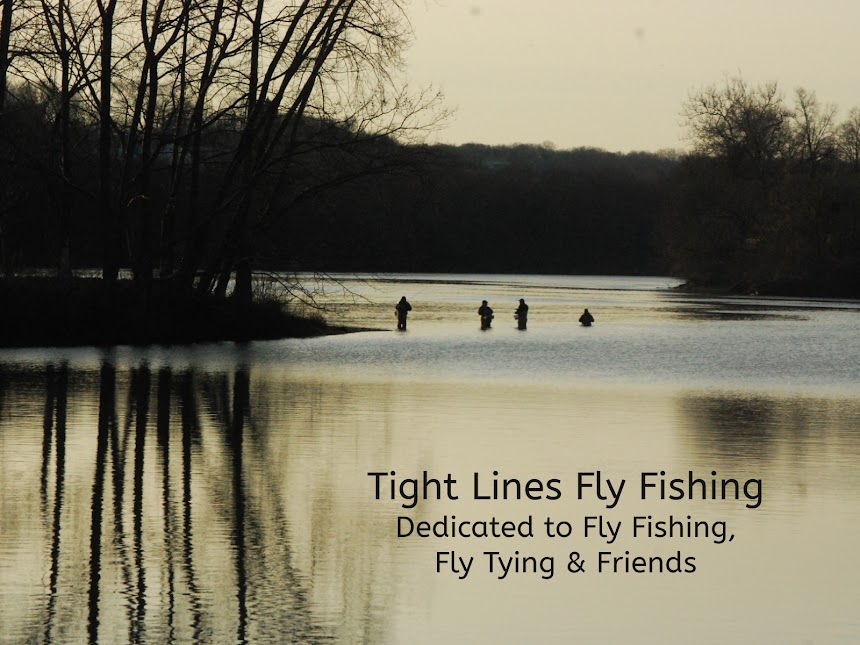Cross Over Nymph
Bead: (Optional) Copper Tungsten bead or color of choice.
Tying Thread: Tan 16/0 Veevus thread .
Tag: Orange Glo-Brite #7 Fluorescent Floss.
Tail: Coq de Leon fibers.
Rib: Micro Flasabou or Pearlescent Mylar.
Counter-rib: Thread spun in a loop.
Abdomen: Nature’s Spirit UV Tracer Squirrel Dubbing Natural Gray.
Hackle: CDC in natural or similar color.
Thorax: UV Squirrel Dubbing Natural Fox Squirrel (For contrast to the abdomen).
This fly was developed by fly fisher Devin Olsen, ‘The Tactical Fly Fisher’. Originally developed without the bead for still water fishing, the river version with a bead is a fish catching magnet. (Hence the “Cross Over Nymph” because of it’s still water & river adaption.) The fly designer fished it to imitate callibaetis nymphs, but it’s just an all-round great pattern. It’s a conglomeration of all those elements to make fish eat it, -- orange tag, UV flash, & CDC hackle. This is really a glorified wet fly even though it’s called a nymph. There is a segment of fly fishers out there that fish and know how productive ‘wet fly’ fishing can be, then there’s many that don’t. Case in point, on my first trip out to Montana I was ‘cleaning up’ using a wet fly rig. Everyone out there was fishing a ‘dropper & a hopper’. My friends along on the trip didn’t carry any wet flies. We visited a half dozen fly shops in the Missoula area. Not one shop sold or had any wet flies on hand. For that matter, rarely do I see a fly shop here in CT carry any. So tie them for yourself! If I were to carry just two wet flies, I’d carry the ‘Partridge & Orange’ and a ‘Hare’s Ear Wet Fly’. This Hare’s Ear variation, with all it’s strike triggers, just might be the fly for you.
Begin by placing your bead on the hook and mount it in your vice. Start your thread immediately behind the bead. Take a few wraps and cut off the tag end. Continue to make touching wraps down the hook shank until it lines up with the hook point. Next, take 3 strands of Orange Glo-Brite Florescent Floss and tie it in behind the eye and wrap back to the bend. Cut the floss to create a short tag behind the bend of the hook. Now tie in 4-5 fibers of Coq de Leon to create your tail. It should be a little less than a hook shank length behind the fly. You are now going to tie in your ribs. Tie in your Micro-Flashabou/mylar on the near side of the hook. Next, create a loop with your thread (the counter rib) and tie it off, leaving it on the far side of the hook. You are now going to dub the abdomen/body of the fly with the UV Squirrel dubbing. Make sure you leave room behind the bead for your thorax. Next, take your Micro-Fashabou and palmer it forward for your first rib. About 4 wraps should do it. Tie that off. Next, place your hackle pliers at the base of your thread ‘loop’ and give it a few twists. Now palmer it forward in the opposite direction for your ‘counter wrap’. Take your CDC feather and trim one side of it off leaving just the tip untrimmed. Stroke the remaining fibers back with your fingers and tie it in by the tip behind the bead. Trim the tip off and take 2-3 turns with the feather, stroking the fibers back as you do it. Tie and clip off the butt end. Next, add & dub your thorax with your UV Fox Squirrel dubbing. Tie off the fly with a few wraps behind the bead. Dab some cement on it and the fly is finished. If some of the CDC fibers extend beyond the bend of the hook, you can trim them off with your fingers to bring it to length.
Devin Olsen of the Tactical Fly Fisher has a great instructional video on how to tie this fly below:
He also has a great website at https://www.tacticalflyfisher.com/.
If you have any questions about this fly or would like to submit a Fly of the Month I can be reached at 203 305-3850 or at pdinice@frontier.com .
















